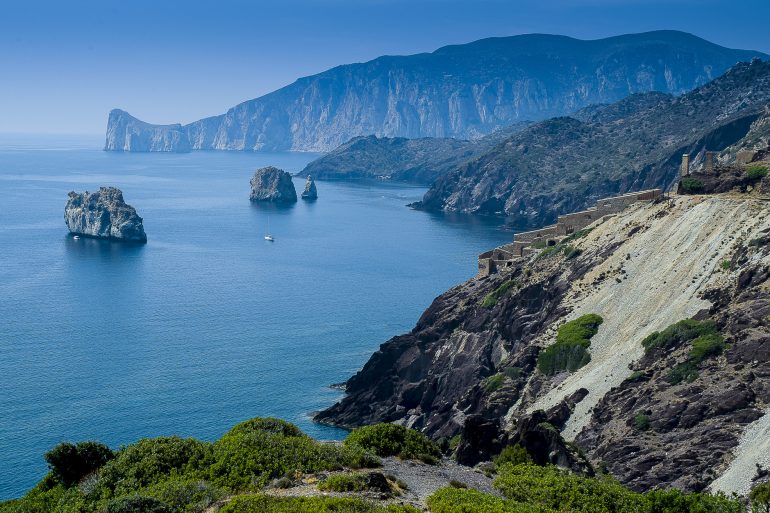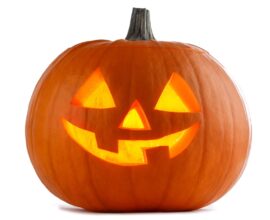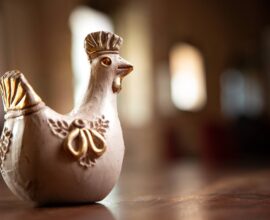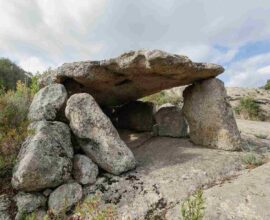Flora Sardinia: nature and history of the island
Flora Sardinia: origins of Sardinian vegetation
The Sardinian sea is one of the most beautiful in the world but the island holds other treasures which contribute to the naturalistic patrimony such as holm oaks and cork trees, prickly pears and rosemary which are all part of the variegated Sardinian flora.
Besides having typically Mediterranean characteristics, the rich and perfumed Sardinian flora has many endemic species, a term used by Swiss naturalist Augustin Pyramus De Candolle for the first time in 1820 when talking about the exclusive presence of plant species and animals within a determined territory.
The uncontaminated nature makes the island a true paradise, the Mediterranean climate helps the growth of plants and vegetation with the beneficial influence of the over the entire territory.
Winter along the coastline is mild and the temperatures rarely drop below zero, the summers are hot and dry and quite windy since the island is exposed to all winds. The hills and flat areas far from the sea are cooler during the winter and hotter during the summer. Precipitation is mainly during November and December, the rest of the year is irregular and variable.
Some Mesophilous species in Sardinia are more that sixty thousand years old and were spread during the Cenozoic period, a Greek term meaning kainò, new, and zoé, life. The warm, humid climate of the territory allowed trees and shrubs like yew tree, holm oak, holly and lauceraso to grow and create the ancient primary forests of Sardinia.
To better understand the origin of Sardinia flora we need to go back 25-28 million years ago, when the island was connected to Corsica, then detached itself from the European plate and rotated 90 degrees, moving 400 km south into the Mediterranean.
Some forest fossils from the Miocene period found in lake Omodeo in the province of Perfugas tell us how Sardinia, before the rotation and the migration was complete, was covered by huge forests. Later glaciation brought the development of local and biocoenoses species.
Today Sardinia’s flora includes Baleares and Corsican endemic species, Adobe also from western parts of the Mediterranean.

Sardinian Flora: seven ecosystems on the island
Time and human intervention have changed the Sardinian ecosystems and have influenced the flora, both its development and its spreading over the island’s territory.
Let’s discover together the main biosystems on the island:
- Coasts and small islands: including beaches, dunes, rocks, cliffs, and garrigues
- Humid and coast areas: ponds, marshes, salt marshes and lagoons
- Mediterranean scrub: can be classified high scrub or low scrub, or according to the kind of plant association based on the different climatic conditions. In the second case it can be called a holm oak, juniper, rock rose, spurge, broom, heather, strawberry tree, olive and carob, olive and lentisk, time, oleander or chaste tree
- Woodlands and forests: this category includes holm oak, oak, deciduous, chestnut, cork and pine forests
- Rivers and inland lakes
- Mountains
- Agricultural and urban zones
Sardinian Flora: the most common species on the island
The flora in Sardinia is a priceless ancient patrimony, among the many present species of the territory here are the most common:
- Aleppo pine
- Domestic pine
- Red juniper
- Phoenician juniper
- Black poplar
- wot
- Black hornbeam
- Black alder
- core
- Chestnut
- Thorny oak
- Cork oak
- holm
- Laurel
- Hawthorn
- Cherry tree
- Carob
- Mastic
- Maple minor
- Holly
- Myrtle
- Tree heather
- arbutus
- Oleander
Marine pine tree is also part of the list and gives its name to the refined five star hotel at Forte Village: Hotel Pineta.
The wide selection of accommodation offered at the multi-prized winning resort in Santa Margherita di Pula, In the Province of Cagliari includes, apart from the 8 elegant hotels and suites, also offers thirteen marvelous luxury villas located in the Mediterranean garden of Forte Village, surrounded by splendid fine golden sand beaches.
Would you like to have an unforgettable vacation and discover Sardinia’s flora? Book your accommodation at Forte Village Resort In Sardinia.
Photo Credits: Dario Sequi






